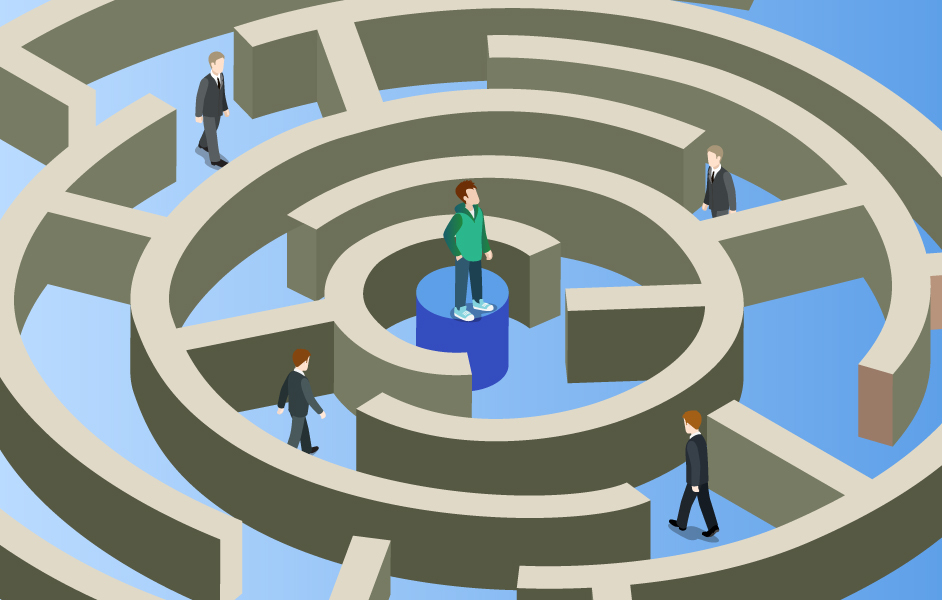
“Shame corrodes the very part of us that believes we are capable of change.”
-Brene Brown
Hey there!
This is Jordan. In this lesson, we will discuss the shame spiral, how it happens, why we cycle through it, and how we can improve.
Lingering Failure
As I mentioned in the beginning of this class, I flunked out of an excellent private school when I was a teenager. I felt like I failed because I had failed. As a result, I developed a belief that the lingering feeling of shame that shadowed me was not only deserved, but was my atonement. My mind constantly reminded me that I had failed myself out of Bellarmine. It was as if my brain hadn’t moved on. There was a part of me that hadn’t come to terms with the situation, and I was still stuck in the past, preventing me from fully engaging with the current world. This lack of engagement led to additional academic failures, which in turn led to more shame and more academic failure.
It was similar to having a mental zombie that kept rising from the dead to haunt my mind. This lingering failure made me feel ashamed and prevented me from opening up to future opportunities, creating a self-fulfilling prophecy that led to even more failure. It was as if my mind was stuck in a shame spiral that I couldn’t get out of.
The Shame Spiral
Typically, the shame spiral plays out in a loop that goes like this:
- Failure: A setback happens that puts you into chaos.
- Judgment: Time goes by and you recover from that failure. However, as your inner Judge starts examining the situation, it starts persecuting you for not being omniscient and superhuman. The Judge decides that you are guilty of failing and wants to remind you of this on a regular basis.
- Shame: The emotional burden of the Judge’s unfair ruling still hangs with you. You have a feeling of regret over the failure and shame for not being perfect. You begin attacking yourself for a long-gone mistake and remind yourself of it often. The shame you feel tricks you into thinking you ought to feel this way out of penance for your failure.
- Emotional breaking point: You get so frustrated that you promise yourself that this will never happen again. So, you create a new plan that seems failure-proof. You assume you are a flawless machine that can work 24/7. You make a plan that is based on an ideal future in which you have unlimited willpower and the foresight to never let this failure happen again. This plan assumes that all will go perfectly.
- Failure again: Your perfect plan is destroyed by real life. Failure happens due to the unreasonable expectations you placed upon yourself, which then lead back to judgment, and the entire cycle repeats itself.
The Shame Spiral Compounds
Over each iteration of the shame spiral, you begin giving your personal Judge evidence to repeatedly condemn you for all of your past and current failures. In our legal system, being tried for the same crime twice is considered double jeopardy, which is illegal. If it’s illegal in our court system to punish you twice for the same crime, then why do you allow your mind to get away with it? A lot of it has to do with the fact that our Judge has become so ingrained in our minds that we can’t distinguish his voice from our own clear thinking. So, the first step we must face is to focus on spotting the Judge. The good news is that becoming aware of this Judge allows us to not take the Judge so seriously.
Spotting the Judge
The Judge uses common language to indicate he’s involved in your life. Usually, he starts sentences with the following openers:
- “You should have known…” The Judge expects you to be godlike in your ability to perfectly
understand how the future will unfold.
- “Why did you…” The Judge has an accusatory tone that will put you on the defensive for your
actions. The Judge questions your motives and your decision-making ability.
- “This is bad…” The Judge looks at things as black and white. Good or bad. Not what is, but what should be.
- “You did it again…” The Judge sees a failure and immediately reminds you of all of your previous failures. It thinks you must punish yourself for this mistake and all previous ones, and he convinces you that this mistake is a personality flaw that you can’t overcome.
By being able to spot the Judge, you create distance between yourself and it that will help you break his shame-inducing logic.
In our next lesson, we will learn about Cognitive Behavioral Therapy and how we can use it to stop the shame spiral in its tracks.
To Do:
- Open your Bounce Back Journal to practice this exercise.
- Think about the failure shame spiral and write down which past failures you continue to contemplate in your Bounce Back Journal.
- Write down the shame language you use to explain your situation.
- Remind yourself to recognize the voice of the Judge, which will help you gain distance between the Judge’s thoughts and that of your own.
- For extra credit, think about how you use the Judge, not only shame yourself but also to shame others. What are some ways you can stop Judging others?
– Joe and Jordan
Recommended Reading
- The Gifts of Imperfection by Brene Brown

